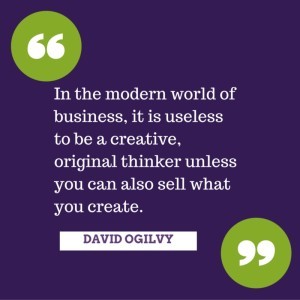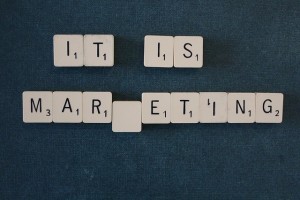Who is the most famous marketer of all time? Steve Jobs? Bill Gates? Lady Gaga? Richard Branson? No! In the remote past of marketing, you can find spectacular discoveries that resisted the passage of time. Although marketing technology changed, these rules still apply: we must focus on customers’ emotions and experience, love testing and treat marketing as science.
Build a professional Buyer Persona. Download Free Ebook
1. John R. Brinkley: create your own medium
Bio: John was a regular physician until he found a cure for male impotence. But how to spread his discovery around the world? It was 1923, and there were limited options for advertisement. Radio resembled a public library, free of commercial. As a bright fellow set up his own radio station, where he played country songs, Bible readings and ads of his method.
Today we know that his treatment didn’t work (after all, it involved implanting goat’s testicles in the human body), but John started a new chapter in the history of marketing.
Takeaway: Create your own medium! Brinkley’s tactics resonate with today’s inbound paradigm. Your communication channel, combining content valuable to your audience (don’t worry, it doesn’t have to be the mix of country music and Bible) and information about your product, is a vital part of marketing strategy and a significant asset.
2. Helen Lansdowne: what matters is not the product itself, but customers feelings
Bio: Helen was the first female copywriter – the territory used to be reserved for men while women were accepted only in direct sales. She worked according to one rule: the copy must be believable. Lansdowne became famous of Woodbury soap copy: A skin you love to touch. Until her copy, the soap was promoted in a dry, medical language, as a remedy for burdensome ailments, such as pimples or xerosis, making customers focus on their problems, imperfections, and insecurities.
Takeaway: Make your recipients feel comfortable and evoke a sense of luxury. Refer to feelings and sensations. If bullet lists of the product’s advantages doesn’ work, address emotions.
Helen, contrary to her male friends, could sympathize with her female customers. Today we have more tools to get to know our audience, from survey and research to advanced demographic and behavioral analysis. Use them!
3. Andre Citroen: at the end of the day, you must see ROI
Bio: Andre Citroen, Citroen founder, had many original marketing ideas, including sponsoring car races or promoting his plant as the most beautiful in Europe. His ambition knew no boundaries. In 1925 he rented Eiffel Tower and had “Citroen” emblazoned with in 125,000 incandescent lights. The strategy backfired: although it increased brand awareness, it also contributed to company bankruptcy, due to shockingly high electricity bills (but Andre’s passion for gambling played probably a more important part).
Takeaway: Sometimes when you design a campaign, two sides of you fight. One is Don Draper, who proposes an exciting project. The other is Math Man, an Excel-Man with data and charts.
Draper is sipping his whiskey, ignoring his rival, but you can’t allow yourself for that contempt.
A campaign is successful not because of its attractiveness or creative idea behind it, but because it drives results: it increases sales or amount or leads or subscriptions. It can – and must – be measured. So love your inner Mad Man – it gives your campaigns a sparkle of uniqueness and imagination, but don’t you ever let him take over the control because he will lead your company to bankruptcy (and you – to alcoholism).
4. Seth Godin: Permission Marketing
Bio: Some call him a genius, others refer to him as “Paulo Coelho of marketing.” He was a pioneer of e-marketing and email marketing and was one of the first to protest against aggressive and disruptive marketing online. Seth started to point out that marketers shouldn’t spam every single person on the internet with their messages just because email is cheap to send. Marketing works only if recipients accept your messages.
Takeaway: The rules Seth established still apply, although media changed. In all the channels, from a mobile app to email marketing to social media, user’s permission is essential. As research indicate, customers have no problem with their behavior being monitored or their data being stored – as long as they are informed about this, asked for permission and offered something in return (for example, personalized offers or discounts).
We’ve already recommended Seth’s blog in our post about the most valuable free sources of knowledge for marketers.
5. Claude Hopkins: advertising is a science
Bio: Maybe you don’t realize how much do you owe to him, but we all regard toothbrushing as a vital part of our everyday hygiene thanks to Claude and his campaign for Pepsodent. He indicated the problem, presented the solution and built the habit.
Takeaway: Hopkins was an extreme rationalist. He instructed his copywriters to construct reasonable arguments in the copy to convince consumers. That’s why he believed in free samples – customers should make decisions on their own, having as much knowledge as possible. It resonates well with the contemporary concept of prosumer and customer’s independence: she can go through 90% of a shopping process on her own. Such consumer needs information, not pushy ads.
Hopkins also believed that the only measure for marketing campaigns is sales. Advertising shouldn’t resemble gambling, where we blindly try new ideas. Marketer operates like a scientist, who collects and analyzes data. We are pretty sure that Claude would love Marketing Automation.
 6. David Ogilvy: test, test, and test some more
6. David Ogilvy: test, test, and test some more
Bio: David Ogilvy was expelled from Oxford in 1931 and didn’t want to continue his education. He started as a door-to-door salesperson and became one of the most influential marketing minds.
Just like Lansdowne, he thought that you must believe in the product to create great copy. Otherwise, it won’t sound credible. He could also give a tip to Citroen: „In the modern world of business, it is useless to be a creative, original thinker unless you can also sell what you create.” (via Matt D’alesio, Marketing Profs)
The passion for testing made him legendary.
Takeaway: “Never stop testing, and your advertising will never stop improving” (via KISSmetrics). Test as many elements of your campaign as possible. Pay attention to headlines: 80% of your audience reads only them.
***
Maybe marketing is full of fads and buzzwords, but some rules remain. We only get the new and more sophisticated technology to execute them.

 Follow
Follow
















